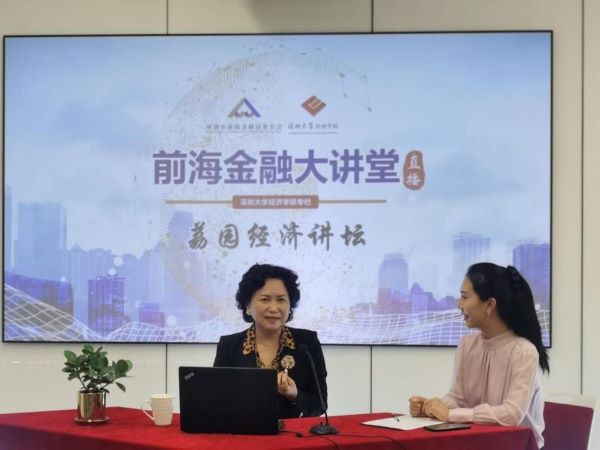On June 15, 2020, Prof. Tao Yitao was invited to deliver an online lecture titled “Strength and Institutional Power of State-Led System in the Fight Against COVID-19” at 3:30 pm in the Qianhai Financial Lecture live streaming room. Prof. Tao Yitao is the director of China Center for Special Economic Zone Research (CCSEZR) of SZU and President of the Belt and Road Research Institute (Shenzhen) for International Cooperation and Development (BRRI), a winner of the State Council Special Allowance, an outstanding social scientist in Guangdong province and a doctoral advisor of Shenzhen University.

In the lecture, Prof. Tao said that China’s practice in the effective pandemic containment proved that the “state-led system” has seven institutional strengths and charms that stem from the characteristics of its own operating mechanism: 1. super strong overall planning and power of command that ensure quick pooling of scarce resources towards an overarching goal in a very short period of time; 2. top-down institutional channel through which government decrees are issued smoothly and implemented accurately and quickly; 3. unbeatable joint force of ideological appeal, moral loftiness, strong mobilization and convening power in bringing people together to handle emergencies in a uniform and unified manner; 4. inherent and spontaneous institutional mechanism and ability to effectively turn the crisis into an opportunity within the shortest time in extraordinary times and moments of public emergencies; 5. strong ability to make overall planning of social order and quickly adjust, recover, and appease the entire society in times of crisis; 6. the integral mechanism for governments to shoulder responsibilities from the top down and for people to quickly return to calm and rational thinking in return. Such mechanism, while giving people a sense of dependence and trust, yielded changes in social culture, values, and lifestyle that are both unexpected and seemingly reasonable, and triggered the positive “spillover effect” and “neighborhood effect”; 7. tenacious strength of calling on and mobilizing the whole society and the powerful supporting capabilities of institutional mechanisms. The tenacious Chinese national character allows many new consumption models and working patterns to be invented and created in the mood of “sorrow and joy”.
According to Prof. Tao, what the China’s exclusive and typical “state-led system” showed in times of large-scale emergencies and nationwide public crisis - the almost unparalleled command-and-control leadership of our powerful social system and mechanism, was not only the institutional guarantee for the remarkable achievements made in the 40-year reform and opening-up, but also the institutional support for the “Chinese miracle”, and even a showcase of the system’s edges to contain the COVID-19 virus quickly and effectively.
Prof. Tao summarized that, China’s anti-epidemic experiences had been drawn on by the world, which was not only an affirmation of the Chinese government’s anti-pandemic measures and methods, but also an affirmation and acceptance of the powerful advantages and unlimited strength displayed by the “state-led system” in response to large-scale public emergencies without ideological prejudice. She said that this was not only a self-transcendence of the Chinese nation, but also a historic transcendence of human civilization.
This keynote lecture gained unanimous acclamation and unprecedented popularity from the netizens with over 5,000 views, especially in the last session when Prof. Tao had a relaxed and pleasant Q&A interaction with netizens in the live streaming room.

Prior to the keynote lecture, Li Jianfeng (Deputy Secretary of CPC, Director and General Manager of Qianhai Financial Holdings), Lei Zhenfeng (Secretary-General of Shenzhen Qianhai Financial Association) and Sun Qi (General Manager of the research center of the Qianhai Financial Holdings), expressed their cordial gratitude to Prof. Tao for her participation in the live-stream Qianhai Financial Lecture. They had amicable talks and reached consensus on future collaboration with the postdoctoral research stations.

